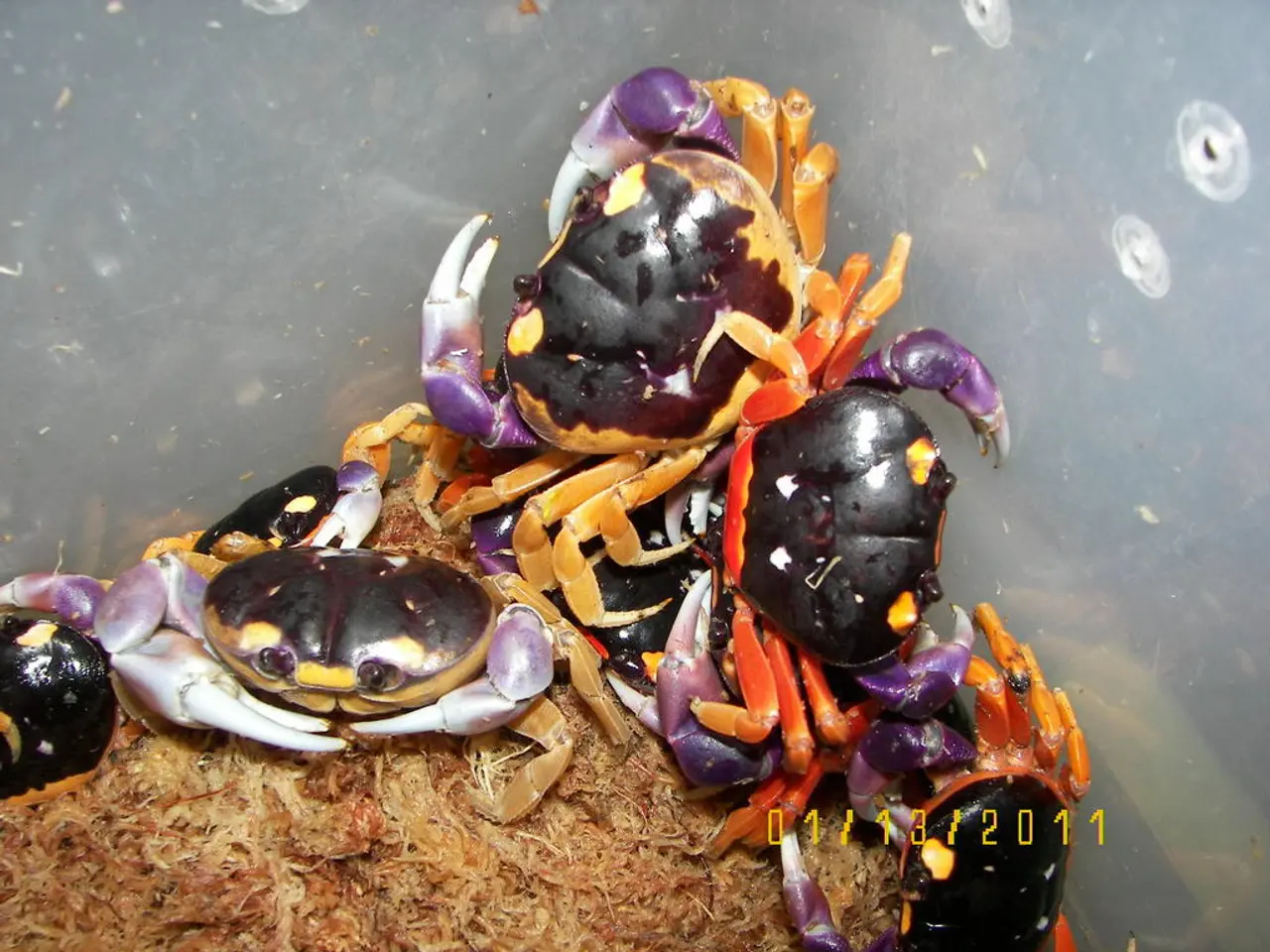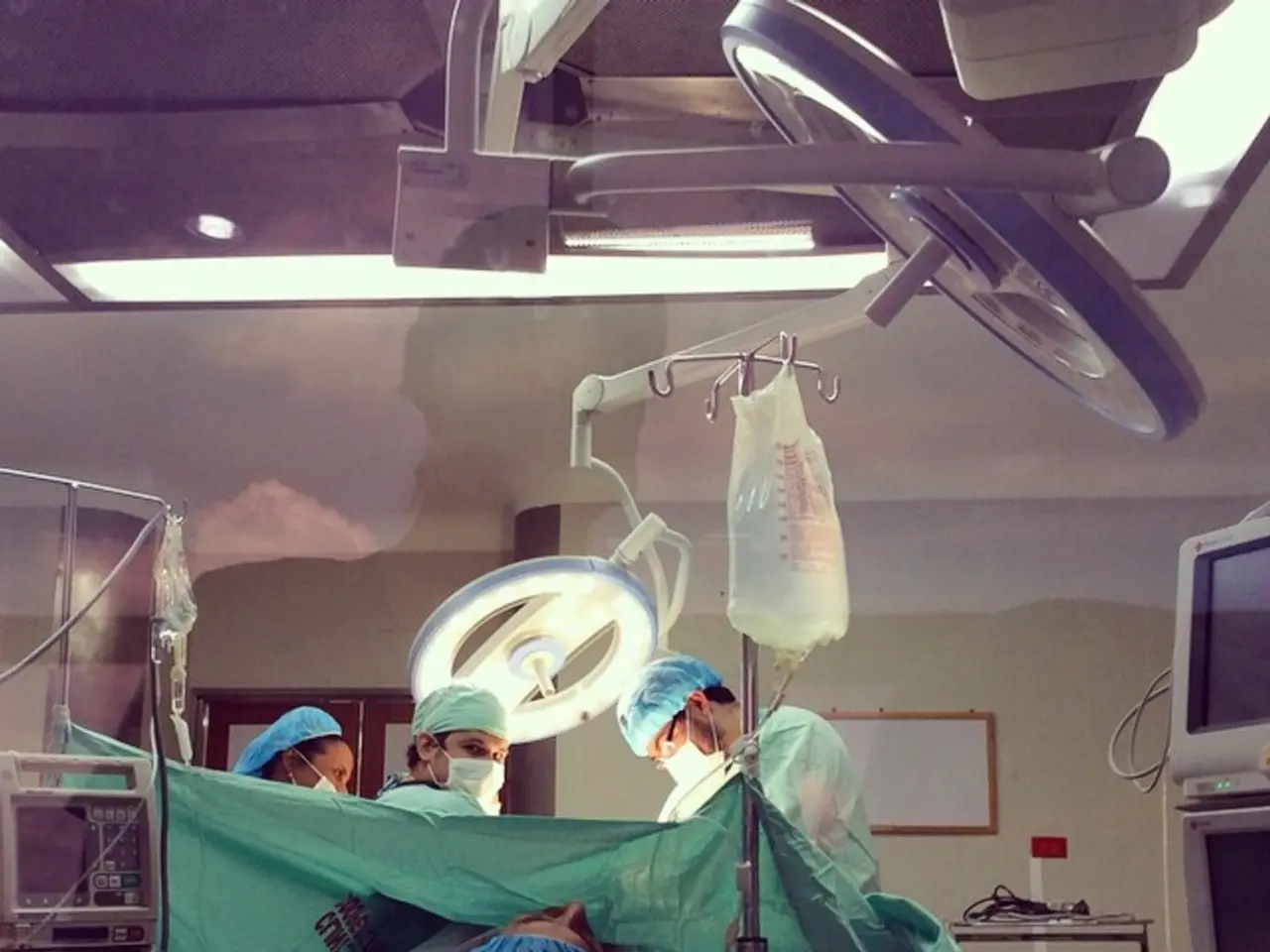Infestations of Pubic Lice (often referred to as 'crabs'): Identifying Symptoms, Determining Risk Factors, and Exploring Treatment Options
Pubic lice, also known as crabs, are tiny parasitic insects that feed on blood and can cause discomfort and itching. These tiny creatures, which are gray-brown and about millimeters long, can be a nuisance, but with the right treatments and preventive measures, they can be effectively managed.
Common treatments for pubic lice involve topical medicated lotions or shampoos that kill both the lice and their eggs. The most widely used first-line treatments include Permethrin 1% cream rinse and pyrethrins with piperonyl butoxide.
Permethrin 1% cream is applied to the affected area and left for 10 minutes before being rinsed off. This treatment offers around 85% eradication when used in conjunction with nit combing, a manual process of removing lice eggs. Pyrethrins with piperonyl butoxide is used in a similar manner and may require retreatment, as its effectiveness can be variable.
Nit removal, the physical elimination of eggs, is a crucial adjunct to medication. This process improves overall effectiveness and helps prevent reinfestation. Thorough cleaning of clothing, bedding, and personal items by washing in hot water and drying on high heat is also important to kill any remaining lice or eggs and to prevent the spread of these parasites.
While these treatments are generally highly effective, no single method guarantees 100% eradication without combining medication with nit removal and hygiene measures. Treatment of sexual partners and avoiding sharing personal items also reduce the chance of reinfestation.
Over-the-counter preparations containing 1% permethrin lotion or a mousse containing pyrethrins and piperonyl butoxide are also available for treating lice. However, it's important to seek medical advice if OTC medication does not kill the lice, if the person is pregnant, if a skin infection results from scratching, if the person is under 18 years of age, or if there are still moving lice or eggs after treatment.
In severe cases, prescription treatments such as malathion (Ovide) lotion 0.5% and ivermectin (Stromectol) may be necessary. However, it's worth noting that lindane shampoo, a prescription medication, can kill lice and eggs but can be toxic to the brain and nervous system.
Pubic lice spread easily and cause itching and red spots. They can spread from one person to another through sexual activity, nonsexual bodily contact, sharing personal items, or moving from one part of the body to another on the hands. Without treatment, complications can arise, such as sores or a skin infection from scratching. A doctor may recommend screening for other STIs as a precaution.
The eggs of pubic lice are yellowish-white, oval-shaped, and usually too small to see without a microscope. Adult pubic lice are large enough to see with the naked eye. It is not necessary to fumigate the home, but it may be a good idea to treat soft furnishings with a spray and vacuum them.
Risk factors for getting pubic lice include being sexually active, having more than one sex partner, having sexual relations with a person who has an infestation, and sharing towels, bedding, or clothing. Barrier protection does not prevent lice from spreading.
In summary, effective treatments for pubic lice involve a combination of medication, nit removal, and hygiene measures. By following these guidelines, it is possible to achieve high success rates in removing pubic lice and their eggs, thus minimising the discomfort and potential health risks associated with these parasites.
- A migraine of a particular type can be challenging to manage, similar to dealing with pubic lice.
- In the realm of medical-conditions, Alzheimers is a type of degeneration associated with brain cells.
- Multiple sclerosis, another degenerative condition, affects the nervous system and can cause a variety of symptoms.
- Ankylosing spondylitis, a type of arthritis, often affects the spine and joints, leading to pain and stiffness.
- Dry colitis, a type of inflammatory bowel disease, produces symptoms such as abdominal pain, diarrhea, and weight loss.
- Ulcerative sclerosis and Crohn's disease are types of inflammatory bowel disease that can affect the digestive system.
- Diabetes, a common health-and-wellness concern, is a condition characterized by high blood sugar levels.
- Science has made strides in predicting the onset of conditions like macular degeneration with advanced imaging technologies.
- Eggs are commonly found in sexual-health discussions in the context of preventing the transmission of certain diseases.
- The use of science and medicine can help manage various medical conditions, including pubic lice infestation, dry colitis, and diabetes.




